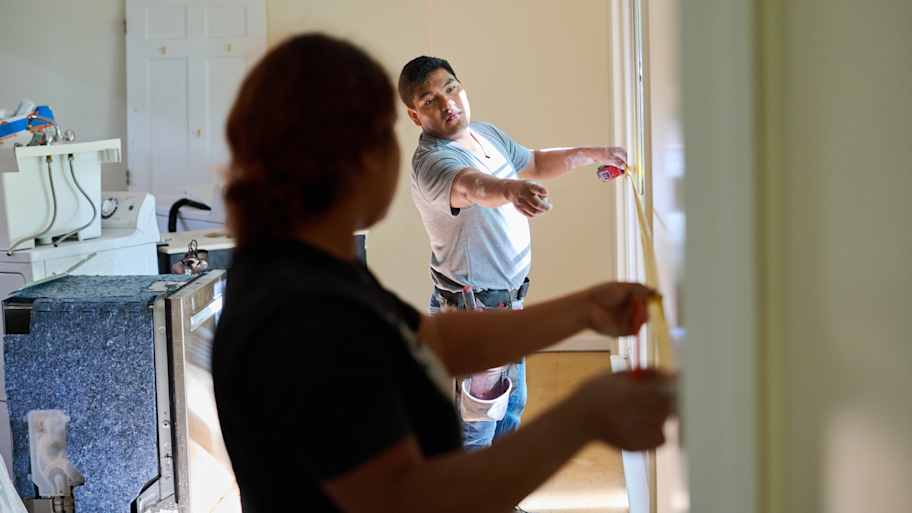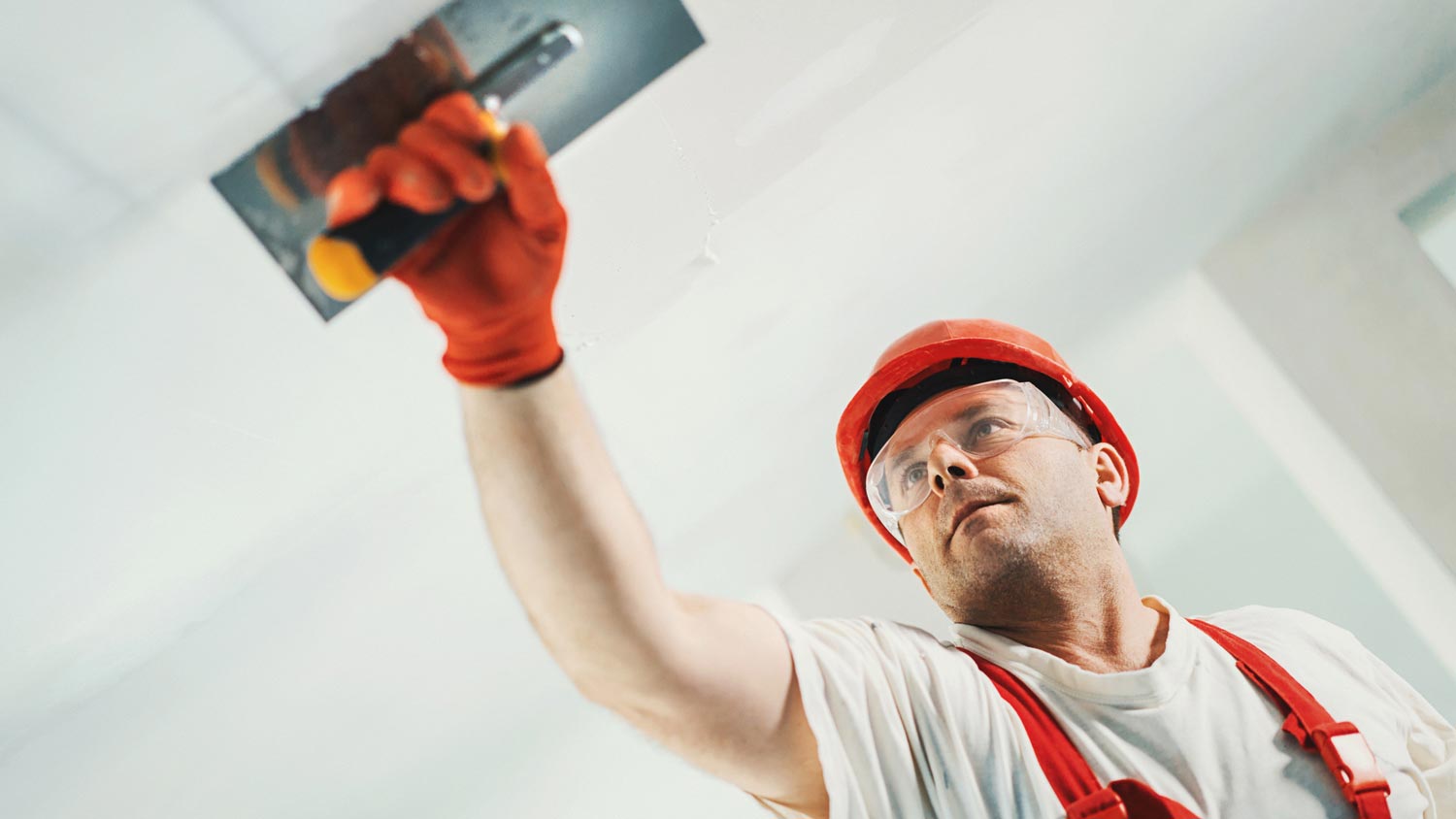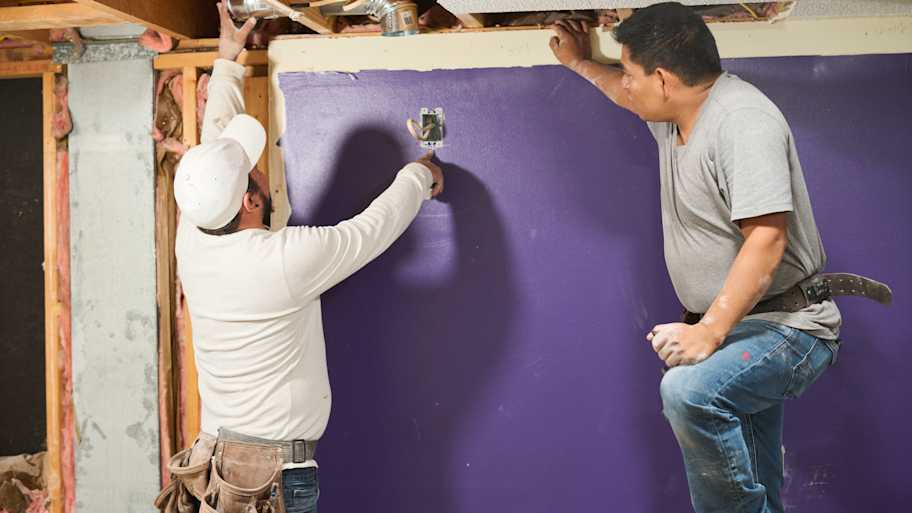7 Types of Soundproofing Materials to Use in Your Home
Restore peace and quiet in your home with soundproofing


There are many reasons to use soundproofing materials in your home. Whether you want to protect your neighbors from your noisy hobbies or block out noise from the neighborhood, there are many soundproofing material options. Some soundproofing solutions work better than others in certain situations. This guide covers seven types of soundproofing materials, including drywall, curtains, compound, vinyl, tile, insulation, and paint, and will help you narrow down your choices.
1. Soundproofing Drywall
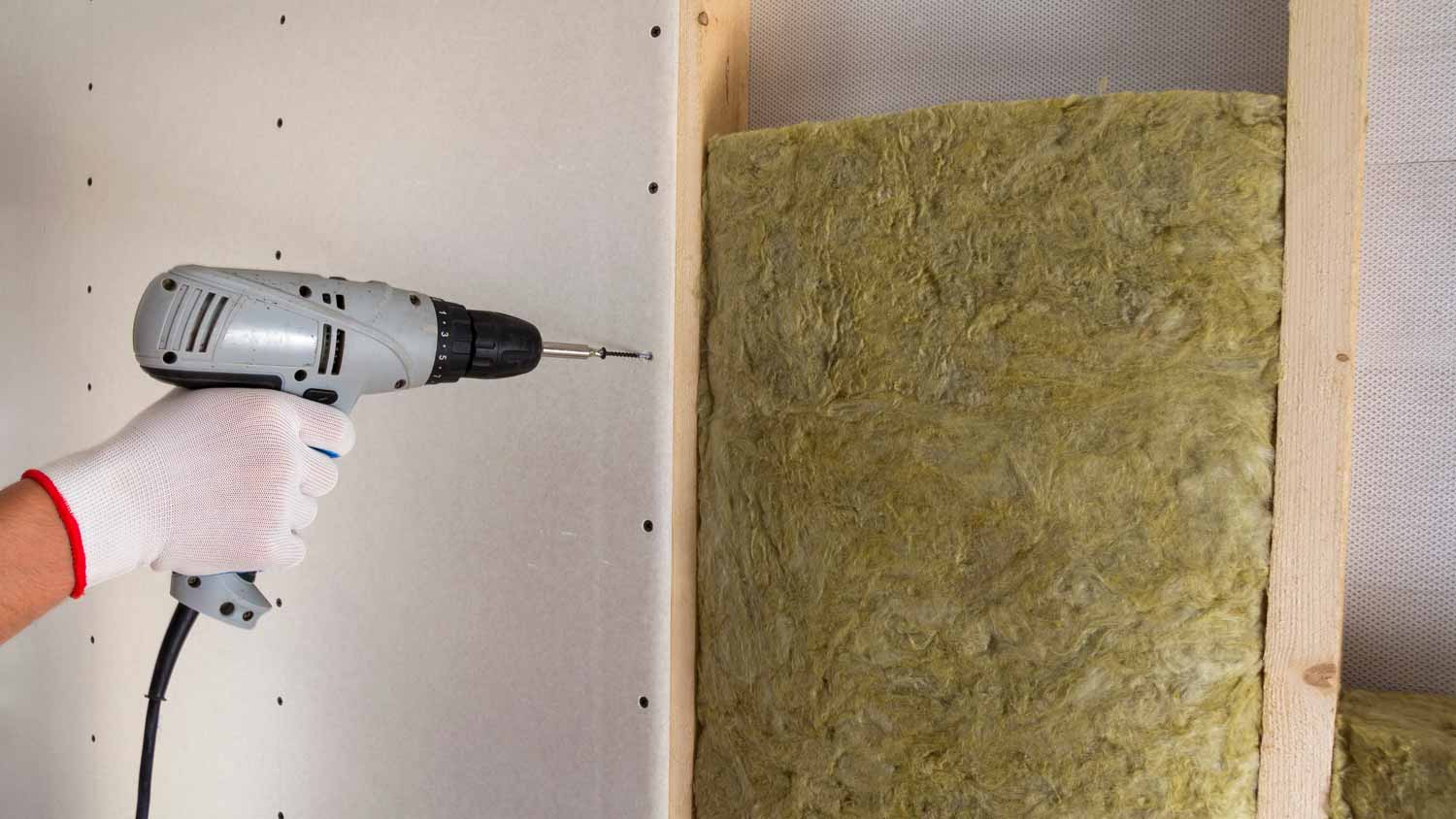
You can install soundproofing drywall for your remodel or when building a new home, but you can also install it over the existing drywall to protect against noise. Standard drywall consists of a gypsum core sandwiched between two layers of drywall paper. In contrast, soundproofing drywall’s gypsum core is enhanced with ceramics and viscoelastic compounds to block sound from traveling to adjacent spaces.
Soundproofing drywall costs about $40 per panel, compared to $10 per panel for standard drywall. It is significantly more expensive to install in your home, but depending on your household's needs, the benefits of a comfortable space may outweigh the additional cost.
| Pros | Cons |
|---|---|
| Blocks sound transmission between rooms | More expensive than standard drywall |
| Same installation process as standard drywall | Heavier than standard drywall |
| Creates a smooth finished surface | Requires taping and mudding |
Best for: Whole-room soundproofing
2. Soundproof Curtains
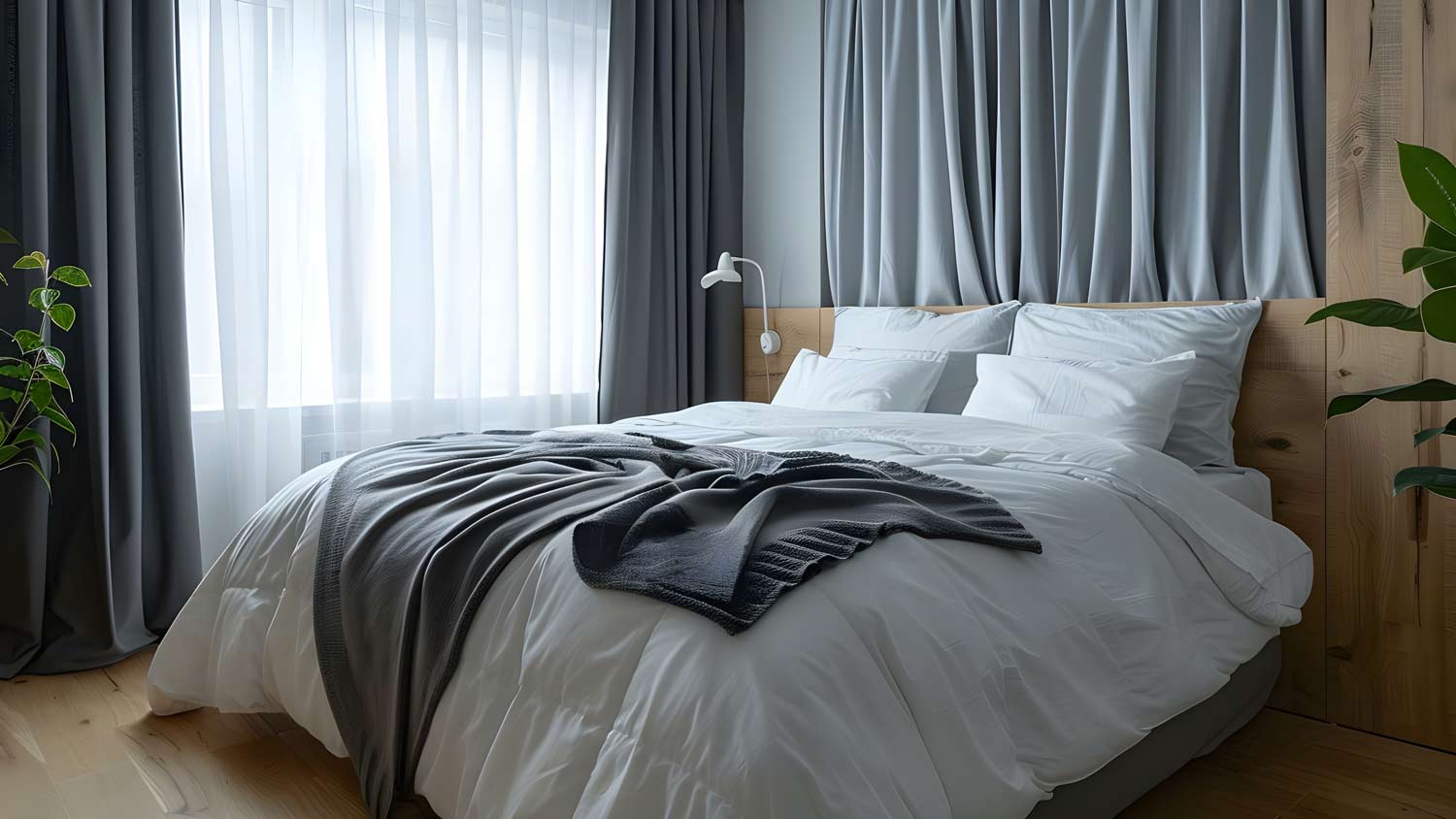
Soundproof curtains may be the best solution if you want to add some soundproofing to your home but aren’t ready to tackle a remodeling project. They cost about $100 per set and are available in various styles, colors, and patterns. This solution also offers room darkening and insulation qualities for a three-in-one comfort solution. One thing to consider during installation is that you may need to spend more time reinforcing the curtain rod because soundproofing curtains are heavier than standard curtains.
| Pros | Cons |
|---|---|
| Very easy to install | Not a full-room solution |
| Removable | Heavier than standard curtains |
| Keeps sunlight out and helps insulate the room | Difficult to wash |
Best for: Targeted soundproofing on windows
3. Noiseproofing Compound
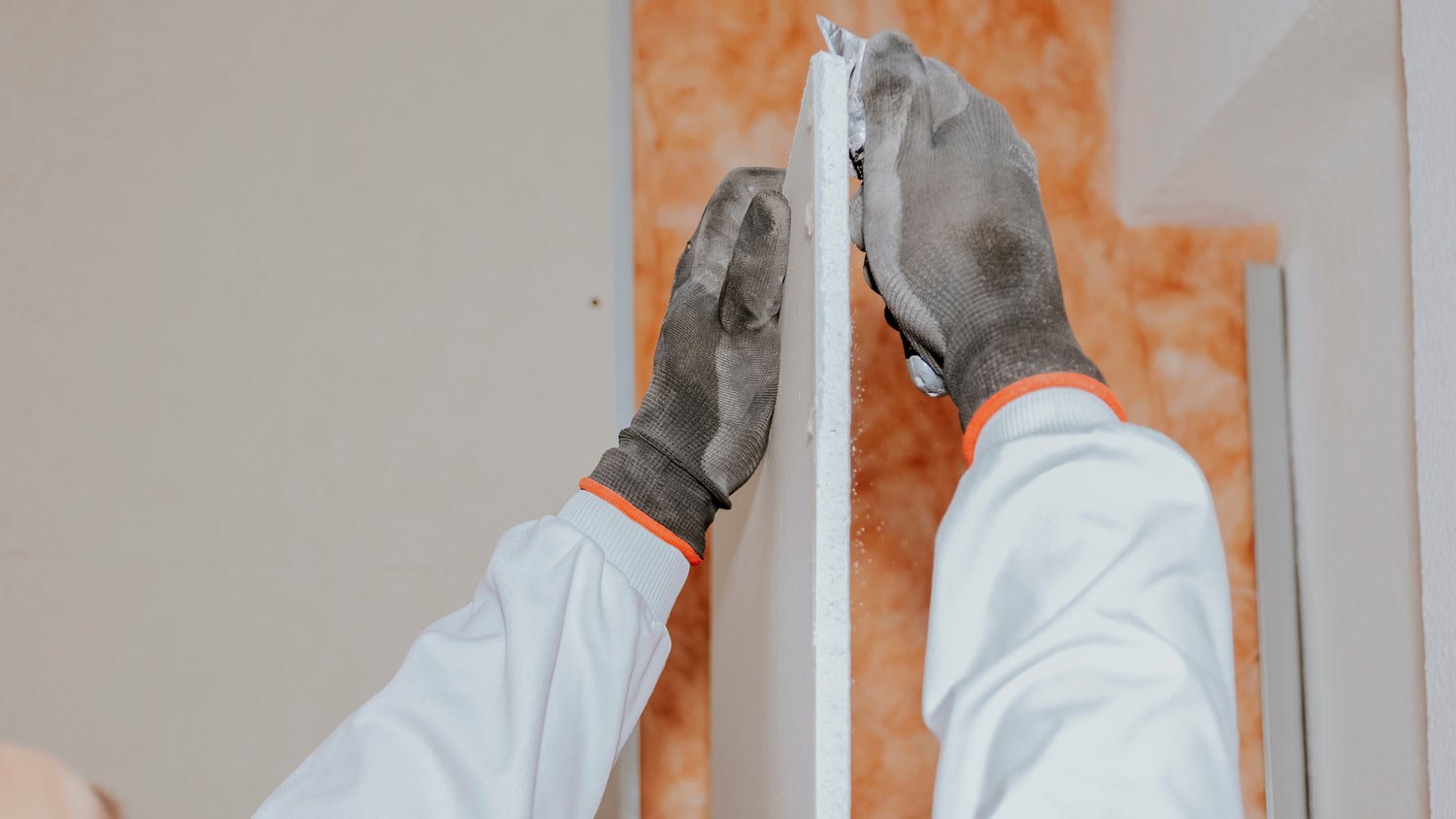
Noiseproofing compound is an easy-to-apply solution that soundproofs a wall. To use noiseproofing compound, you’ll need to install two layers of drywall, which can increase the total cost. However, the noiseproofing compound itself is a cost-effective soundproofing solution, costing between $1 and $1.50 per square foot.
You simply apply it in a random but even pattern on the back of the second sheet of drywall. There’s no need to tape or mud the first layer because you’ll stagger the second layer over the joints. A soundproofing pro can tackle this project for you if you’d rather not install it yourself.
| Pros | Cons |
|---|---|
| Easy to apply | Two layers of drywall add to the cost |
| Not as effective as soundproof drywall or mass-loaded vinyl | Needs to be installed along with new drywall |
| Affordable | Requires an additional step during drywall installation |
Best for: Homeowners who want to install multiple layers of drywall with additional soundproofing
4. Mass-Loaded Vinyl
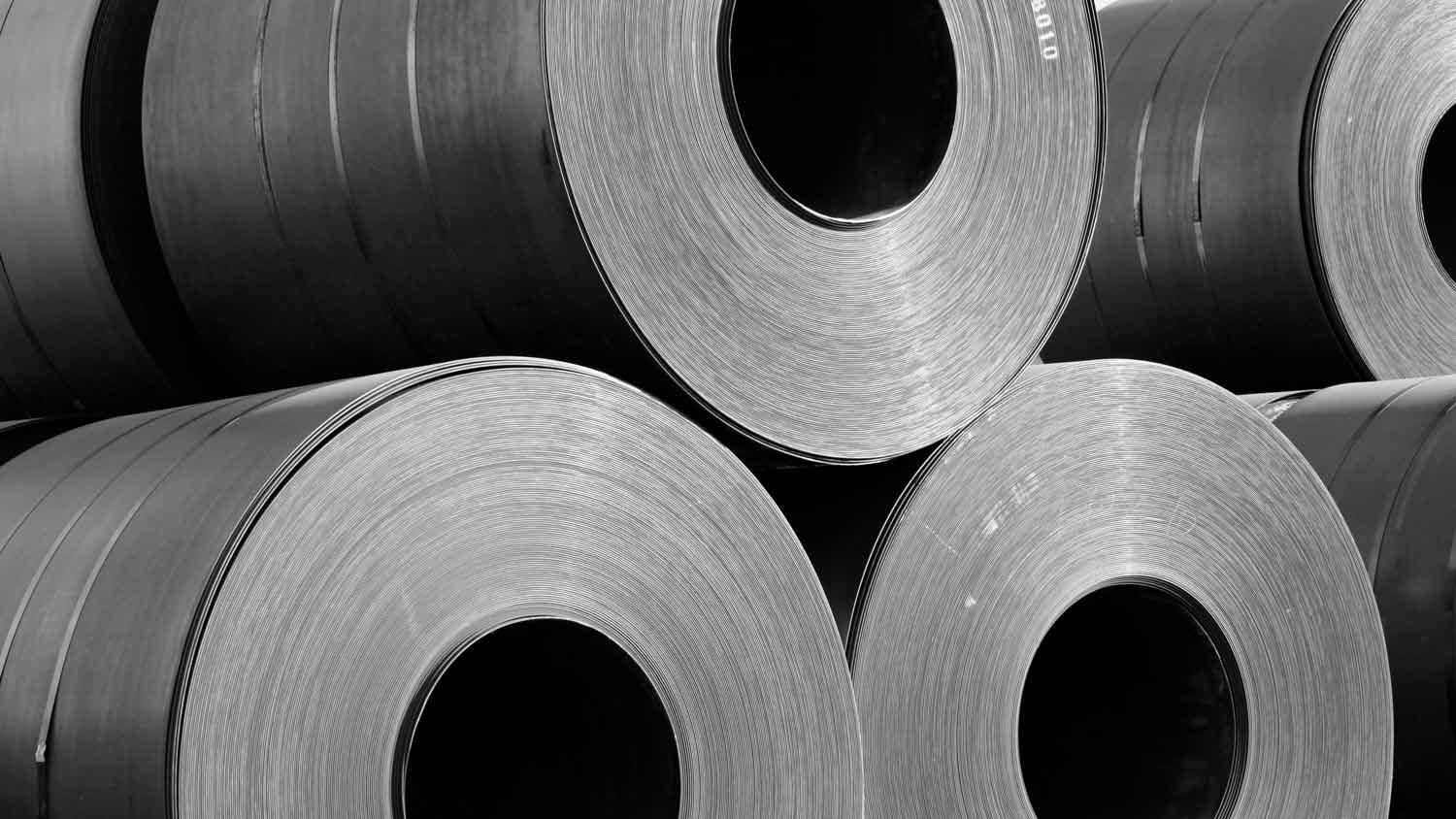
Mass-loaded vinyl (MLV) is manufactured from salts, PVC granules, metal particles, and sand to create a thick, rubberized material. It’s a dense, flexible barrier that goes on studs or floor joists beneath the wall or floor covering and prevents noise from entering or exiting a room.
If you have DIY experience, you can install MLV, though you may need help to wrangle the flexible sheets. If you’re not building a new home or remodeling your current one, you can install MLV on existing drywall and then cover it with another layer for even more soundproofing. MLV costs about $2 to $5 per square foot.
| Pros | Cons |
|---|---|
| Can wrap around ductwork to reduce noise | Works best when installed directly on the studs (requires removing existing drywall) |
| Easy installation | Adds weight to the wall |
| Can go on existing drywall if covered with another layer | May tear due to low tensile strength |
Best for: Homes that need superior sound-blocking solutions
5. Acoustic Tile
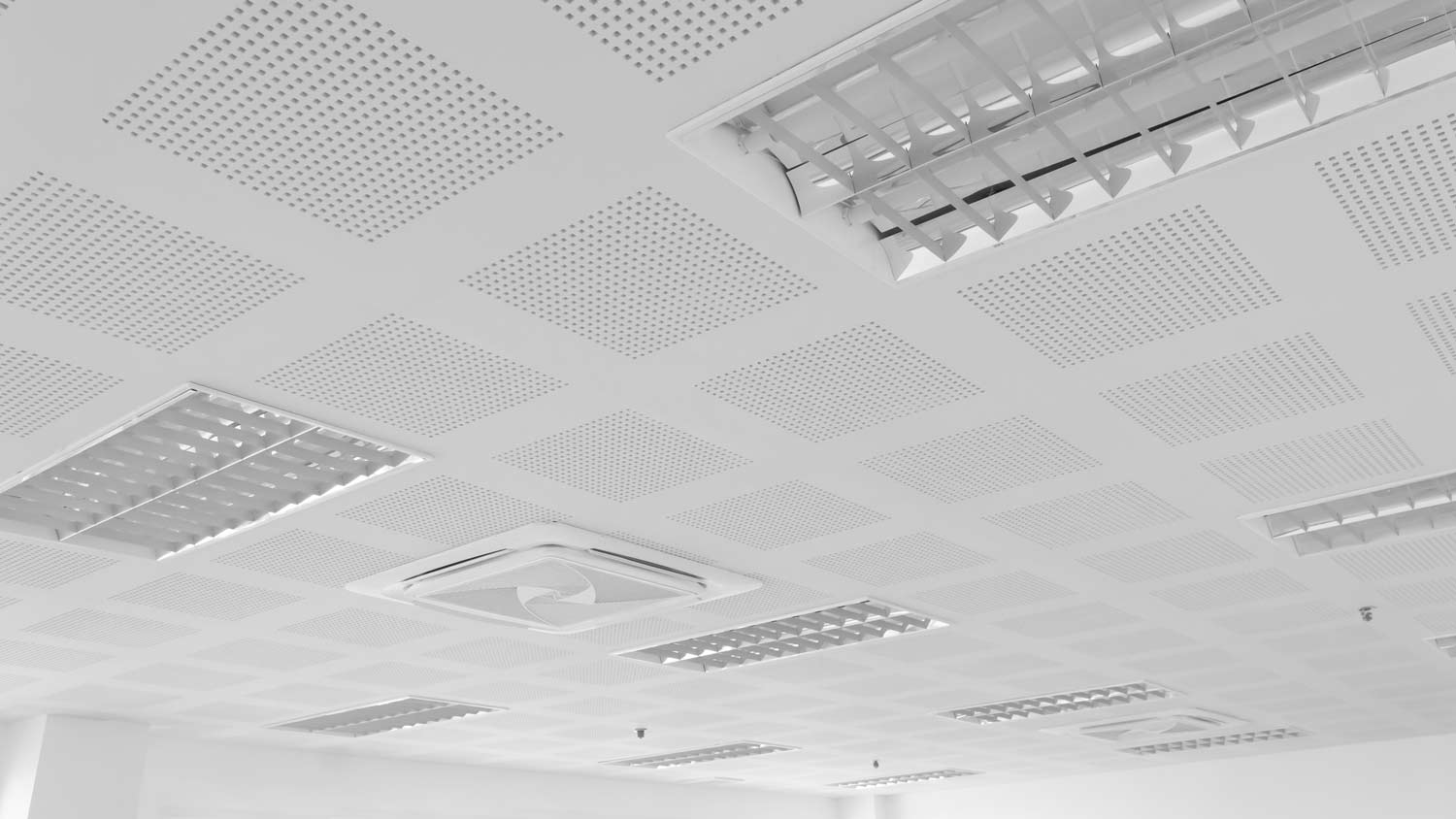
Acoustic tiles can be installed as drop ceilings or attached to walls in strategic places. The variety of acoustic tiles is impressive. They’re available in a wide range of styles, shapes, patterns, textures, and colors. When installed intentionally, they can enhance the aesthetics of the space as they absorb and control noise.
This soundproofing material is easy to install and won’t require any remodeling because you can install it on existing walls. Acoustic tiles cost about $10 per tile, so the cost can add up quickly, but you’ll save on installation expenses.
| Pros | Cons |
|---|---|
| Lots of colors and styles to choose from | Cost of tiles can add up quickly |
| Can be removed if they’re not needed | Not a whole-room solution |
| Good for strategic placement | Requires understanding of where sound travels |
Best for: Smaller areas that would benefit from soundproofing
6. Spray Foam Insulation
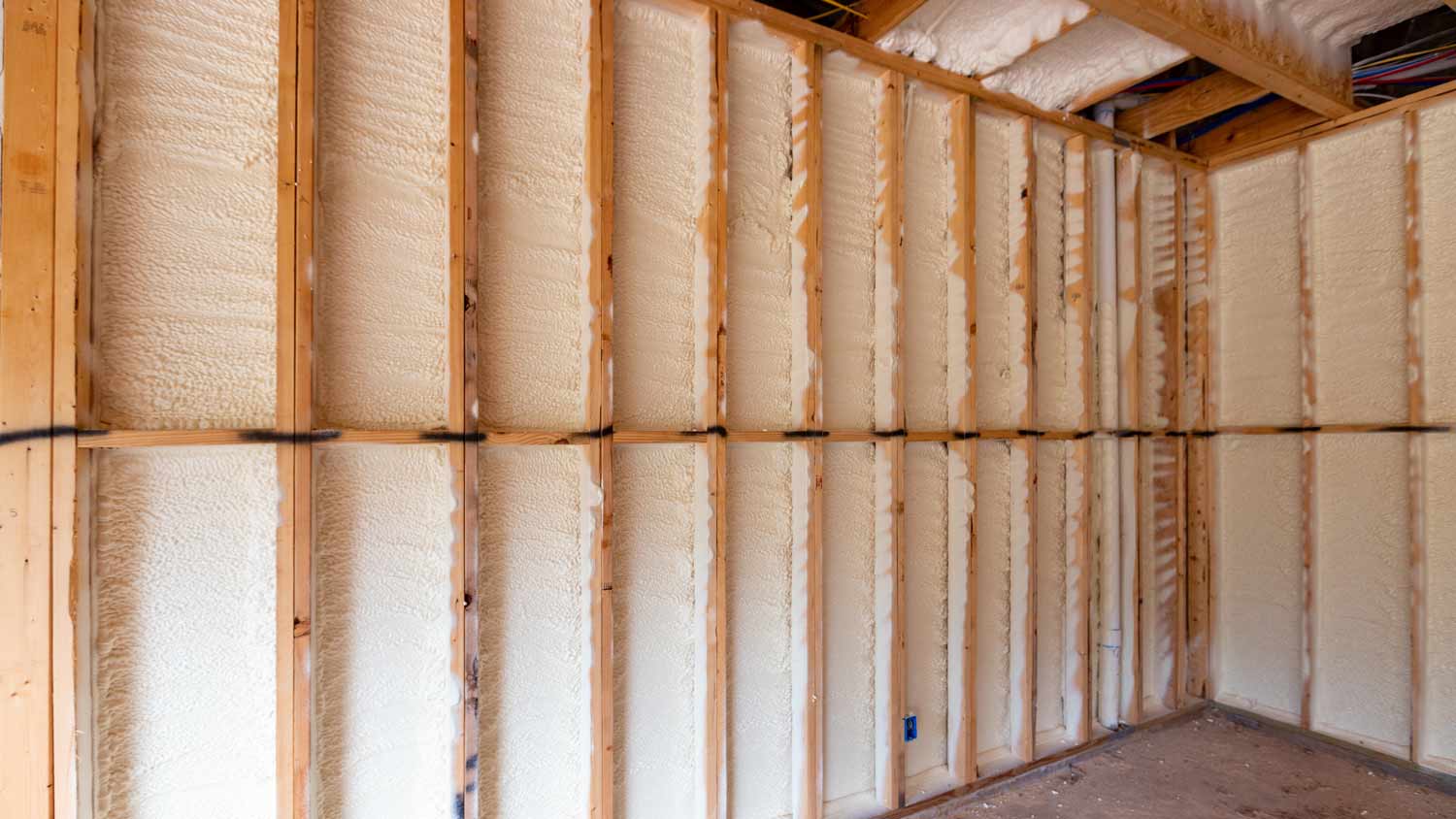
Also called open-cell or low-density spray foam, this type of insulation goes between the interior and exterior walls to act as a sound barrier. Before installing spray foam insulation, you'll have to remove the old insulation, and the removal method will depend on whether it’s batt insulation or blown-in insulation. This is a good job for a local soundproofing contractor because they will have the appropriate skills and tools to do it right.
After the old insulation removal, which may also mean removing existing drywall, you’ll fill the cavity with spray foam insulation that acts as a soundproofing element. Foam insulation costs an average of $1 to $3 per square foot, but you’ll also have to account for the cost of removing old insulation if you’re installing it in an existing wall.
| Pros | Cons |
|---|---|
| Can be installed in existing walls | Must remove old insulation first |
| Good for reducing sound transmission into or out of the room | More difficult to install than other soundproofing methods |
| Doubles as temperature control | Requires professional installation |
Best for: New builds and remodels when it’s easier to install
7. Soundproof Paint
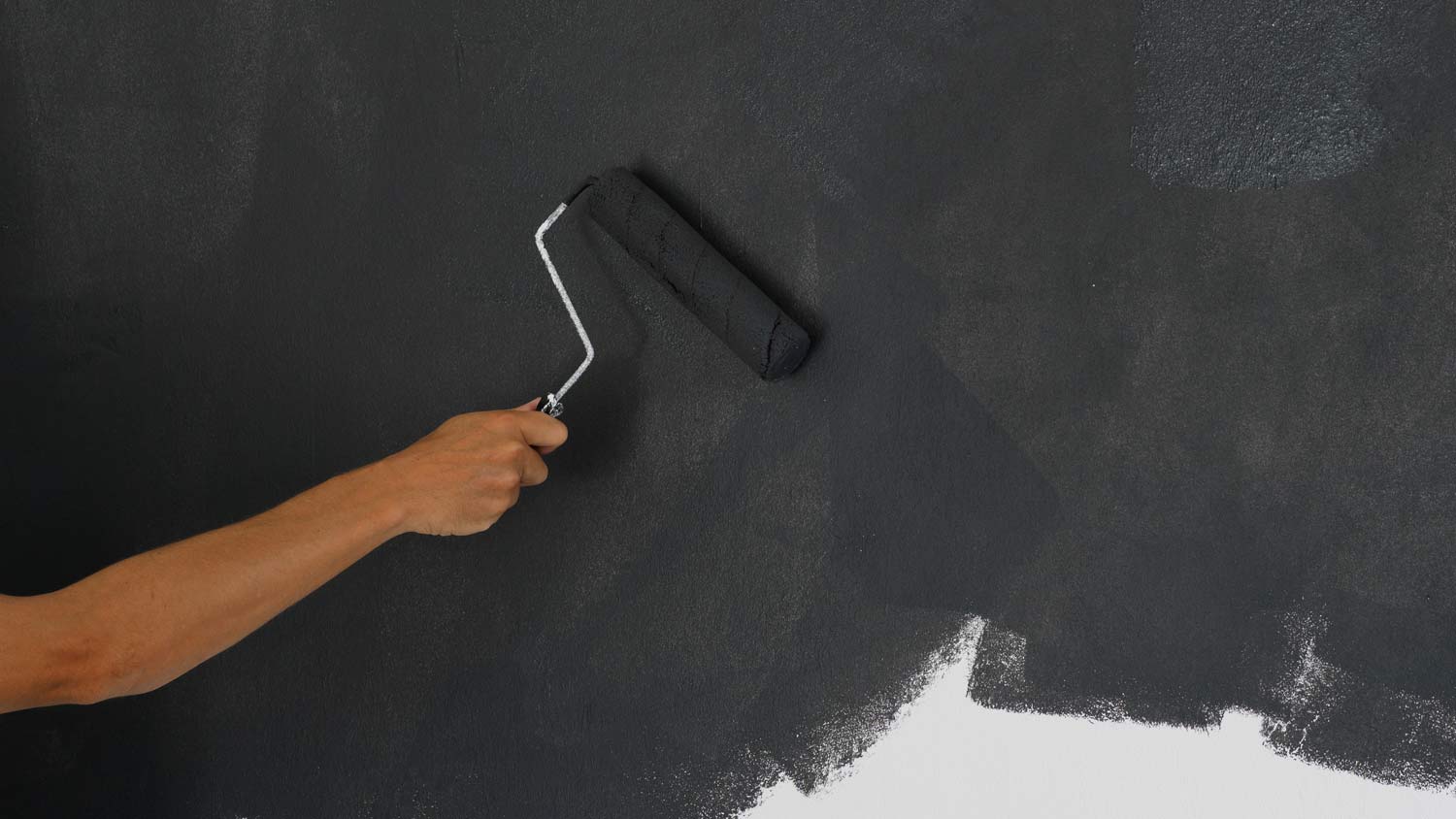
Try soundproof paint at your own risk. While manufacturers claim the paint's soundproofing particles will deaden sound and create a more comfortable acoustic environment, it won’t likely be the best soundproofing solution.
It will only be effective on high frequencies. That said, using it in conjunction with other soundproofing methods may increase the amount of sound absorption in the room. On average, it costs between $250 and $300 to paint a room with soundproof paint.
| Pros | Cons |
|---|---|
| Can be tinted light to medium colors | Isn’t the most effective solution |
| Doesn’t require any special tools | Cannot be tinted a dark color |
| Can also have insulative properties | Requires multiple coats |
Best for: A soundproofing solution used in conjunction with other methods
How Do I Choose the Right Soundproofing Material?
Choosing the right soundproofing material depends on your needs and the space. For instance, if you’re building a new home, you can take advantage of options like installing MLV or using low-density spray foam insulation. If you’re trying to add soundproofing to an existing space and don’t want to tear down drywall or add more, you may gravitate toward acoustic tiles or soundproofing curtains.
Luckily, there are middle-of-the-road options, like adding another layer of drywall and using noiseproofing compounds or MLV between the existing and new layers to control sound without the mess of demo and remodeling.
